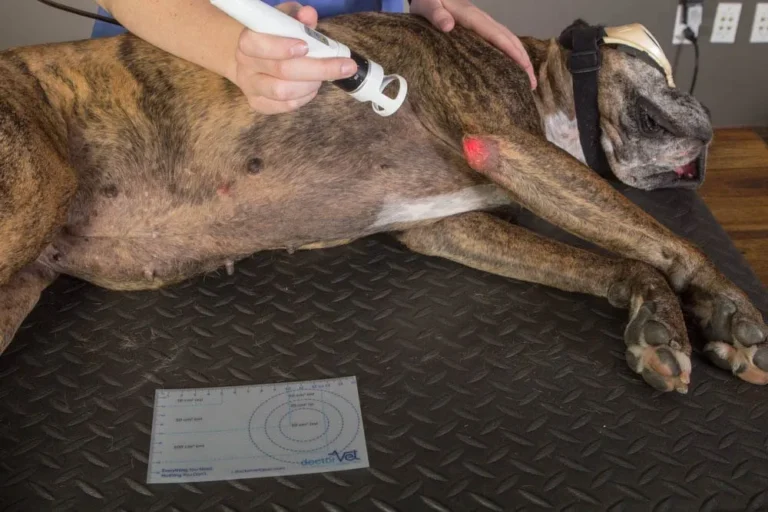You probably know at least one veterinarian who uses laser therapy. You may have even asked DVMs in your referral network which conditions they treat with Class IV therapy lasers.
Chances are, each response was unique in some way, but you’ve probably heard of the high-efficacy applications such as chronic pain syndromes, post-surgical incisions, ear infections, and rehab cases. The truth, however, is that the list of applications gets longer by the day as more veterinarians are successfully exploring new uses of Class IV lasers.
- The basic science
- The more “fringe” conditions
- The biggest mistake
- Keeping laser on the brain (or your staff and clients)
Laser therapy is so versatile, in fact, that it can benefit nearly 80% of veterinary patients in some way. For that reason, some practices use it on every patient as a part of the standard office visit.
It has become standard practice to use therapy lasers after every surgical procedure by default, without even asking the pet owner for consent. It is simply included as a line item just like anesthesia, because it is highly effective and has no known side effects.
Laser Therapy’s Mechanism of Action
Veterinarians who are not familiar with laser therapy might be skeptical upon learning of its extensive list of applications—until they understand the modality’s mechanism of action.
Laser therapy forces the body to metabolize quicker in the local treatment area. It improves capillary circulation, thereby bringing more fresh blood to the area and pushing away stagnant blood. This exposes afflicted cells to vital nutrients and oxygen, which is converted into chemical energy that the cells use to heal quicker.
The limitations of laser therapy are only those pathologies that cause the body to fight itself to the point that stimulating the body would stimulate the pathology. Examples include malignancies and autoimmune disorders. Beyond those few contradictions, laser therapy is safe and effective as a pain management and bio-stimulatory tool.
Newly Discovered Applications of Class IV Laser Therapy
How far a veterinarian will stray from the standard applications of laser therapy depends very much on his or her training and understanding of the modality, as well as some sense of adventure.
If you scour veterinary literature, you won’t find many double-blind clinical studies on therapy lasers; however, if you search PubMed for clinical evidence on the efficacy of laser therapy, you’ll be inundated with thousands of articles on its various applications—ranging from its basic usages to the vastly more extreme and bizarre: things like treating diabetic ulcers, traumatic brain injuries, peripheral nervous system failures, mal-union fractures, and more.
The Greatest Mistake Made by DVMs Who Offer Laser Therapy
The greatest misstep with laser therapy is not taking full advantage of its many applications. Class IV lasers are a non-invasive, drug-free solution that offers better patient outcomes in a myriad of surgical and therapeutic applications.
The better question is, “What CAN’T you treat with laser therapy?” With that in mind, below you will find a useful tool to remind you and your staff of the many uses of therapeutic lasers. This list comes not from some snake-oil salesman—but from a compilation of decades of veterinarian feedback.
SOUND TOP TIP
The absolute worst thing you can do when incorporating any new modality is to let it collect dust. It is essential to put a “new toy” to use. It will increase familiarity with the new technology and help get your staff on board with its implementation. Before you know it, it has become a seamless part of your everyday operation providing benefits to your patients and revenue for the practice.
Conclusion
Class IV laser therapy is one of the fastest growing modalities in the veterinary profession. Multiple clinical studies have proven that laser therapy relieves pain and inflammation, stimulates nerve regeneration, speeds up healing, prevents scarring, and reduces swelling. Nearly 80% of veterinary patients can benefit from laser therapy.
If you would like to learn more about laser therapy, or for information about SOUND’s® laser systems, call 800-268-5354 or click here.

